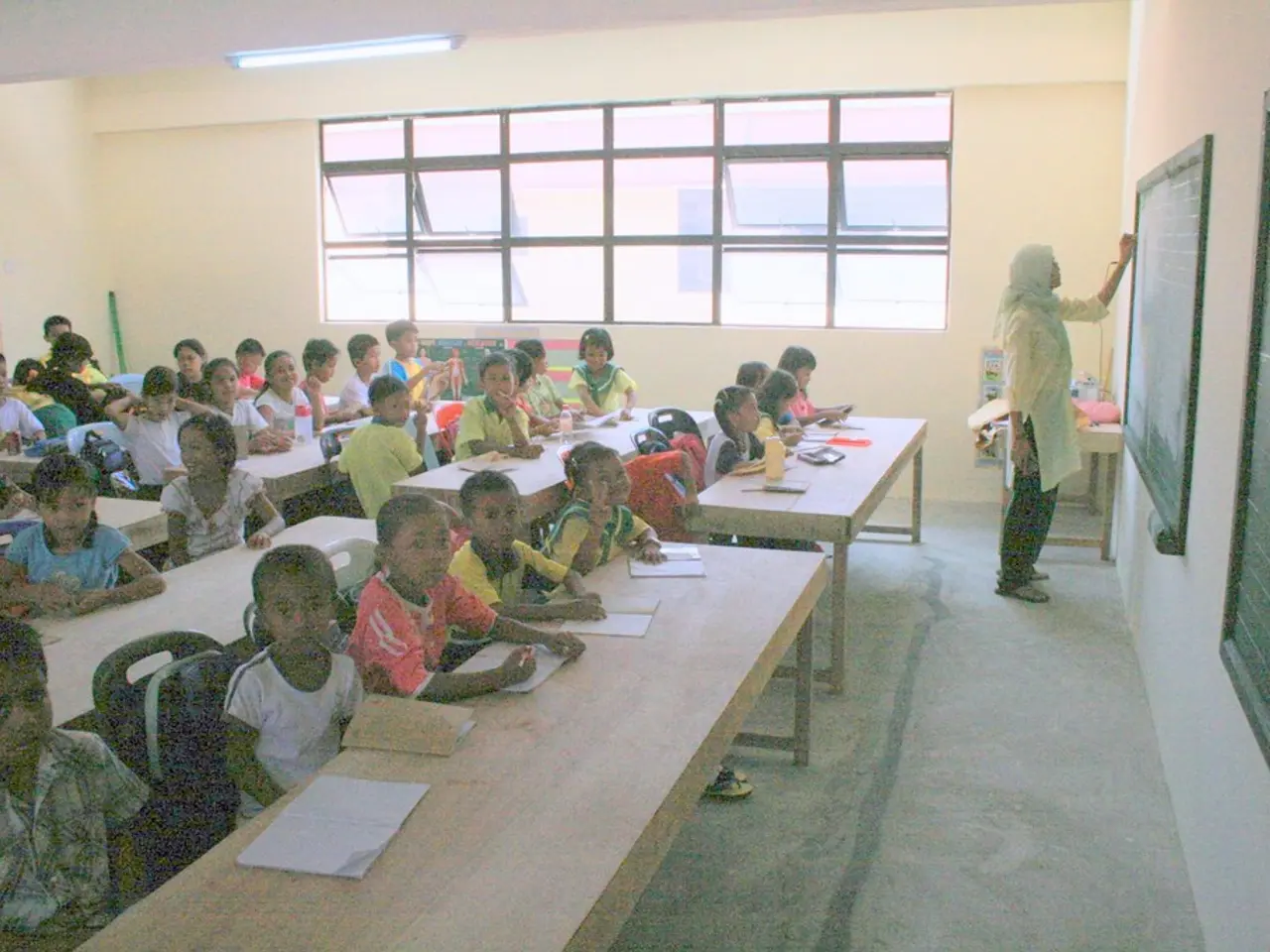Main Focus of Many Autism School Inclusion Programs Shifts Towards Transforming Classroom Environments Rather Than Adjusting Pupils
=====================================================================================
A new study published in Autism (2025) by Valentine Perrelet and colleagues has examined 233 experimental studies on interventions for autistic children and adolescents in mainstream classrooms. The research highlights the need for schools to shift their focus from changing students to adapting environments to support inclusion.
The studies involved over 15,000 autistic participants, typically aged between 5 and 11. While the review does not provide a direct summary of the specific best practices from the comprehensive review, it does highlight several key considerations and strategies for adapting school environments to meet the needs of autistic students.
Best Practices for Adapting School Environments
- Environmental Adaptations and Universal Design
- Design classrooms and school spaces that are naturally inclusive and adaptable to diverse needs, following universal design principles.
- Provide sensory-friendly environments by offering quiet spaces, reducing noise levels, and allowing students to use sensory aids like headphones or fidget toys.
- Curriculum and Teaching Practices
- Offer flexibility in how students demonstrate learning, accommodating different learning styles and needs.
- Modify curricula to include topics of interest to autistic students, enhancing engagement and motivation.
- Social Support and Inclusion
- Provide support for social interactions and peer relationships, helping autistic students navigate social situations effectively.
- Foster a culture that prevents social exclusion and bullying, ensuring all students feel valued and included.
- Teacher Attitudes and Knowledge
- Educate teachers about autism, emphasizing the importance of understanding and accommodating neurodiverse needs.
- Encourage positive attitudes towards autistic students, focusing on their strengths and abilities rather than deficits.
- Addressing Root Causes of Stress
- Understand that autistic students often experience additional stress due to environmental factors like sensory overload and social pressures.
- Implement systemic changes to address bullying, sensory overload, and inflexible curriculum structures, viewing these as environmental issues rather than student problems.
The review finds that most interventions targeted students' social skills and interactions, with fewer efforts aimed at adapting the school environment itself. The authors caution that many included studies had small sample sizes and low reporting quality, making it harder to determine for whom particular interventions work best.
The authors suggest that future research should pay greater attention to diverse student experiences, especially those shaped by cultural and environmental factors. They also stress the importance of teacher attitudes and knowledge, mental health and wellbeing, and environmental and policy-level factors that can either support or hinder inclusion.
The consultants in the study noted that political, cultural, and economic contexts strongly shape what's possible in schools. Therefore, advancing inclusion for autistic students will require stronger partnerships between schools, families, health professionals, and autistic communities.
Inclusive education has been a policy priority for decades, supported by international agreements such as the United Nations Convention on the Rights of Persons with Disabilities. The study is the most comprehensive of its kind to date, covering studies published between 2006 and 2023, including research from 59 countries.
In conclusion, creating inclusive school environments involves not just adapting physical spaces but also refining teaching practices and social policies to support autistic students. By shifting the focus from changing students to adapting environments, schools can provide a more supportive and inclusive learning experience for all students.
- The new study on interventions for autistic children and adolescents underscores the significance of education and self-development regarding the importance of adapting school environments.
- Adapting school environments to support inclusion for autistic students requires a focus on health-and-wellness, particularly mental health, as autistic students often experience additional stress due to environmental factors.
- The review highlights learning about cultural and environmental factors as crucial in future research to pay greater attention to diverse student experiences.
- The study suggests that addressing root causes of anxiety and stress, such as bullying, sensory overload, and inflexible curriculum structures, is key to enhancing personal growth for autistic students.
- Mental-health professionals and science researchers can collaborate more closely to provide insights into the psychological behavior of autistic students, leading to more effective interventions and strategies for supporting learning.
- By adopting a universal design approach for classrooms and school spaces, schools can create a culture of inclusion that encourages education and personal growth for all students.
- Strengthening partnerships among schools, families, health professionals, and autistic communities is essential for advancing the science of inclusive education and addressing the mental-health needs of autistic students in education-and-self-development settings.




